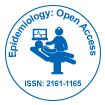Наша группа организует более 3000 глобальных конференций Ежегодные мероприятия в США, Европе и США. Азия при поддержке еще 1000 научных обществ и публикует более 700 Открытого доступа Журналы, в которых представлены более 50 000 выдающихся деятелей, авторитетных учёных, входящих в редколлегии.
Журналы открытого доступа набирают больше читателей и цитируемости
700 журналов и 15 000 000 читателей Каждый журнал получает более 25 000 читателей
Индексировано в
- Индекс Коперника
- Google Scholar
- Шерпа Ромео
- Генамика ЖурналSeek
- БезопасностьЛит
- Доступ к глобальным онлайн-исследованиям в области сельского хозяйства (AGORA)
- Международный центр сельского хозяйства и биологических наук (CABI)
- РефСик
- Университет Хамдарда
- ЭБСКО, Аризона
- OCLC- WorldCat
- Полный текст CABI
- Кабина прямая
- Публикации
- Женевский фонд медицинского образования и исследований
- Евро Паб
- ICMJE
Полезные ссылки
Журналы открытого доступа
Поделиться этой страницей
Абстрактный
Status of Knowledge on the Risk Factors of Low Birth Weight among the Women of Reproductive Age in Rural Bangladesh
ABM Alauddin Chowdhury, Keka Rani Halder, Md. Imdadul Haque, Faisal Muhammad, Md. Mahamudul Hasan and Moniruddin Chowdhury
Background: Low birth weight (LBW) is one of the major public health problems in developing countries, like Bangladesh. Maternal knowledge is directly involved with the status of birth of her baby. Very little is known about the knowledge on the risk factors of LBW babies in rural life context of Bangladesh.
Methods: A cross sectional study was conducted among the selected reproductive age women of the village Vagna and Shubadda in Kearanigonj sub-district under Dhaka District with a view to assess the level of knowledge about risk factors of low birth weight. A total of 300 reproductive aged women were interviewed purposively using semi-structured questionnaire.
Results: The study reported around two-third (64.0%) of the respondents had mentioned that they had perceived knowledge about the low birth weight. Among all the maternal risk factors, anemia was identified by two-fifth of participants (40.0%) followed by malnutrition (18.6%). The study documented only a little less than one fifth of the respondents had knowledge that lack of antenatal care in pregnancy can cause of LBW newborn. Bivariate analysis found statistically significant association between knowledge on low birth weight and respondent’s age (P=0.001), education (p=0.001), occupation (p<0.001) and their guardian’s education (P=0.001) and occupation (P<0.05). However, education is the most important determinant to have the knowledge about the risk factors and prevention measure of LBW.
Conclusion: The study findings observed that women lack the knowledge on risk factors of low birth weight in terms of mothers’ risk factors, complication and prevention of low birth weight. The study focused more attention to some affecting factors of the low birth weight with the mother’s education, occupation, health status and antenatal care service. The LBW scenario may be reduced in expected rate if health policy makers consider the urgent intervention raising the awareness about the risk factors of LBW, and also providing much reproductive education to the problem of low birth weight.
Журналы по темам
- Биохимия
- Ветеринары
- Генетика и молекулярная биология
- Геология и науки о Земле
- Еда и питание
- Иммунология и микробиология
- Инженерное дело
- Клинические науки
- Материаловедение
- медицинские науки
- Науки об окружающей среде
- Общая наука
- Сельское хозяйство и аквакультура
- Социальные и политические науки
- Уход и здравоохранение
- Фармацевтические науки
- Физика
- Химия

 English
English  Spanish
Spanish  Chinese
Chinese  German
German  French
French  Japanese
Japanese  Portuguese
Portuguese  Hindi
Hindi